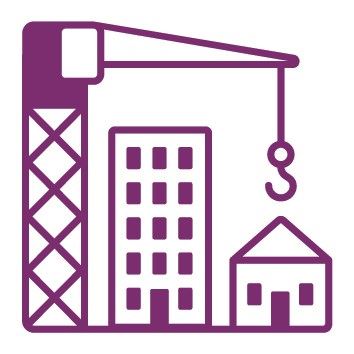
At the initial stage of the COVID-19 pandemic, employers and contractors alike were feverishly reviewing the force majeure provisions in their construction contracts, hoping to see terms like “epidemic”, “pandemic” or “infectious disease” included. Making express provision for the allocation of risk in relation to new safer work practices or supply chain disruption due to a pandemic are not typical features of construction contract negotiation and many of these risks were unforeseen by the parties.
At this stage however, we are all adapting to living with the virus on a day-to-day basis and for the construction sector, it is clear that COVID-19 related risks are no longer unforeseeable and in the most part they should not be classed as unforeseen. Employers and contractors negotiating their construction contracts now and into the future will need to consider how the risk associated with COVID-19 is allocated, in particular:
-
Additional cost of compliance with COVID-19 social distancing regulations, and
-
Extensions of time due to site closures or a reduction of the number of personnel permitted on-site
 Issues to be considered
Issues to be considered
Initial negotiations will likely focus on:
-
The existing restrictions continuing
-
Stronger restrictions affecting construction work practices coming into force
-
Complete site closures, and
-
Supply chain disruption
In each case the risk allocation may be more appropriate for one party to assume than the other and in the current environment some level of disruption and revised work practices to comply with existing guidelines should be expected by any contractor and would be expected to remain a contractor risk.
However, where the consequences of the event cannot be readily identified at tendering stage, for example site closures, it may be more appropriate for the risk to be shared between the parties.
Cost increases
The pandemic can impact issues such as additional labour costs, for example stemming from a sectoral employment order, and costs relating to a mandatory site closure. Site closure cost might include for example demobilisation costs, remobilisation costs and/or scaffolding rental. The parties may want to list out expressly what categories of cost the employer will be liable for, and to what maximum level. The allocation of risk for each category will vary on a case-by-case basis depending on the bargaining position of both parties and the specific type of works involved.
Extensions of time
An event such as a site closure would likely be included as an extension of time event. However, while an employer can agree to an extension of time, an employer may not necessarily have to cover the cost in relation to same. The parties may want to expressly provide for which events constitute time and money events and which will only entitle an extension of time. As referenced above, the parties may wish to adopt a “risk-sharing” structure in which there is a 50 / 50 split in the cost and the contractor is only entitled to 50% of the actual delay, or the contractor may be at risk for the delay and cost up to a certain point (for example a certain threshold of cost and time) after which the employer assumes the risk for anything further.
Change of law provisions
As the country drifts in and out of “lock-down” as the number of infections and/or deaths increases and decreases, it is arguably foreseeable that stricter measures may be implemented going forward but the details and the timing will be unknown. To deal with these scenarios it would be prudent to have a change of law provision clarifying where the risk lies when a delay or increased cost is incurred by reason of a new legislative provision.
Conclusion
If you are an employer or a contractor about to contract for construction works, it would be prudent to consider what you can plan for now in terms of programming and costs, taking into account current measures, and which party is in the more reasonable position to assume certain risks. Due to the complexity of the pandemic and the constantly evolving landscape of how the government is dealing with it, there is no one-size fits all approach.
For expert advice and guidance on mitigating the impact of COVID-19 on your project, contact a member of our Construction, Infrastructure & Utilities team.
The content of this article is provided for information purposes only and does not constitute legal or other advice.






